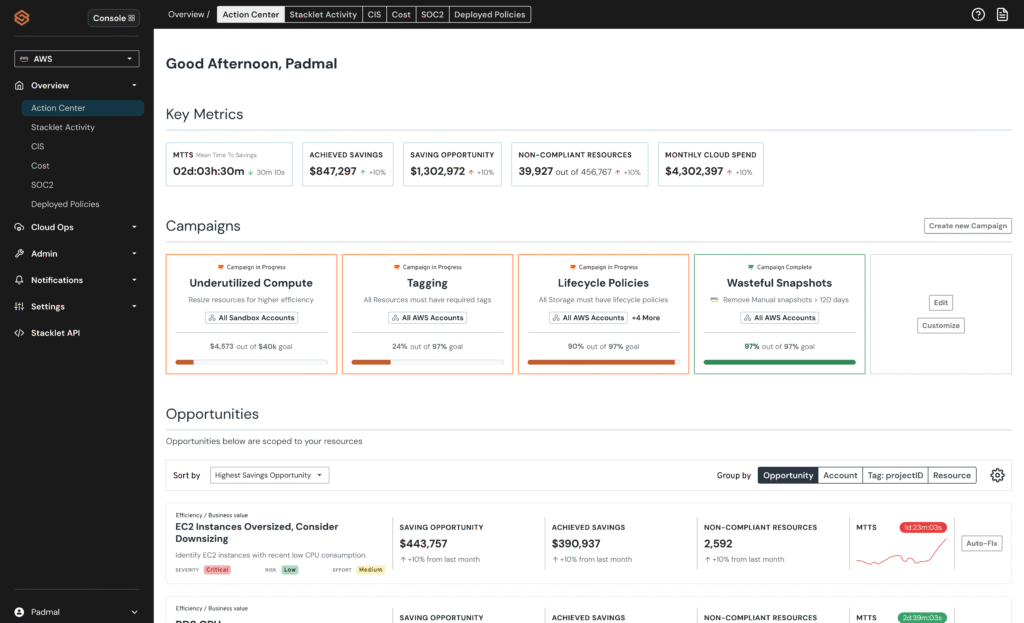
Stacklet today added agentic artificial intelligence (AI) capabilities to the Jun0 assistant it developed to rein in cloud computing costs.
In addition, the company is now providing access to a console that surfaces actionable insights for reducing costs, which can be accessed from within the Slack messaging platform from Salesforce or the Jira project management software from Atlassian.
The agentic AI capabilities added to Jun0 now via a chat interface make it possible to, for example, dry-run policies or query cost data. They can also coordinate time-bound optimization efforts across infrastructure-as-code tools and runtimes, in addition to measuring how long it takes to turn insights into savings using a mean-time-to-savings (MTTS) Tracker tool that Stacklet provides.
Stacklet CEO Travis Stanfield said these capabilities will accelerate the pace at which IT teams can achieve a return on investment (ROI) from adopting best FinOps practices. For example, it will now become much easier to create and test policies and controls using the Jun0 natural language interface, he added.
AI agents, in effect, will become digital teammates that will be incorporated into IT workflows to automate a wide range of policy controls, noted Stanfield.
FinOps initially rose to prominence as a coordinated effort to rein in the cost of cloud computing by encouraging finance and IT teams to collaboratively implement controls that reduce overall wastage of cloud resources. In practice, most of those efforts are now being managed by IT teams, which now have access to tools that enable them to implement policies such as automatically turning off idle virtual machines.
Those capabilities will become especially critical in the age of artificial intelligence (AI) as the amount of cloud infrastructure being consumed by next-generation applications continues to exponentially increase, noted Stanfield.
More organizations during uncertain economic times are more sensitive to the total cost of IT than ever. Cloud computing has proven to be especially challenging because costs can vary considerably from one month to the next, which makes it difficult for finance teams to confidently predict how much financial resources need to actually be allocated. Ideally, most organizations would like to reduce the cost of cloud computing, but any outcome that leads to more software being deployed for roughly the same cost is often just as desirable.
Hopefully, there will come a day soon when AI agents can automate cloud optimization to the point where very little IT infrastructure is wasted. In the meantime, estimates concerning how much cloud infrastructure might be wasted by organizations range as high as 50% in some cases. Much of that spending could easily be reallocated to other IT initiatives or dropped back down the bottom line of an organization seeking to improve overall profitability.
Regardless of motivation, the days when application developers could, with minimal oversight, spin up cloud resources using company credit cards are coming to a close. The challenge and the opportunity now are to find a way to put the right controls in place without having to unnecessarily get in the way of application developers who continue to race to build and deploy software as fast as possible.


